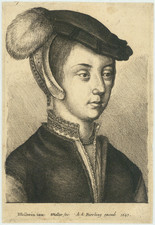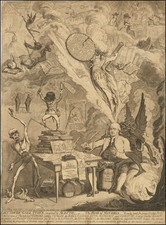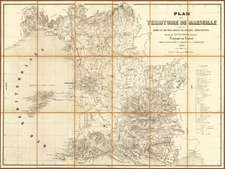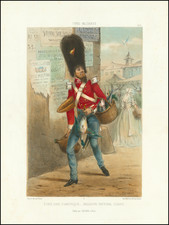Composite Image Depicting French Naval Uniforms from the late 18th Century
This composite image, titled "Suite du tableau des uniformes de la marine divisés en 15 corps," presents a meticulously detailed representation of French naval uniforms, categorized into fifteen distinct corps. Each section within the image illustrates both the officers and soldiers of the marine, offering a comprehensive visual study of the naval attire.
Historical Context
The French Navy has a storied history, dating back to the 17th century, and has played a critical role in shaping the nation's maritime prowess. Uniforms have always been an essential aspect of military life, symbolizing rank, role, and the evolution of military fashion. This image encapsulates the variations in uniforms over time, reflecting changes in military hierarchy, functional needs, and stylistic preferences.
Description of the Image
The image is structured into five vertical columns, each depicting three rows of figures. The first row in each column features an officer from different naval squadrons, including Croisic, Lorient, Bréhat, St. Malo, Granville, Le Havre, and Honfleur. Each officer is portrayed with distinctive regalia that denotes their specific squadron, complete with swords, hats, and intricately designed coats.
The second row showcases soldiers of the marine, dressed in uniforms that complement those of their officers, yet simpler in design, highlighting the hierarchical structure within the navy. These uniforms are characterized by their functional yet formal appearance, suitable for various maritime duties.
The third row depicts matelots (sailors), who are dressed in more practical attire, reflecting their hands-on roles aboard ships. The uniforms of the matelots are notably less ornate but are designed for durability and ease of movement, essential for their labor-intensive tasks.
The same engraved image is used for each person of the same rank, with the squadrohn's diffferentiated by colors.
The basic image of each of the three classes of naval personnel are identical engravings (3 sets of 5 images), with the rest hand drawn, including the decorative border. A fascinating element of the decorative border is the section at the top right, which is cut away. This is indicative of editorial work, where the artist decided to cut away a portion of the first image, fill the cut away section with blank paper and then re-draw (ie. correct) the section with an improved image.
The image appears to have been created in the late 18th century. Several indicators suggest this timeframe:
-
Uniform Style: The design and style of the uniforms depicted in the image reflect the fashions typical of the late 18th century, particularly in terms of military attire. The use of tricorn hats, the cut of the coats, and the decorative elements are consistent with those seen during this period.
-
Handwriting and Manuscript Titles: The elegant manuscript titles, characteristic of 18th-century script, further support this dating. The style of handwriting and the formal presentation align with the conventions of late 18th-century documentation.
-
Historical Context: The structure of the French Navy and the specific naming of naval squadrons correspond to the organizational practices of the late 1700s. This period saw significant naval engagements and reforms in military uniforms, which are reflected in the detailed illustrations.
Several of these French naval squadrons played significant roles during the American Revolutionary War (1775-1783). The French Navy was instrumental in providing support to the American colonies in their fight against British forces. Specifically, squadrons based in key French ports such as Lorient, Brest, and others would have been involved in various naval engagements and support missions during the war.
Based on these observations, it is reasonable to conclude that the image was likely drawn in the late 18th century, possibly between 1770 and 1790.













![(Early Computer Imaging) [A La Mémoire de J.M. Jacquard.]](https://storage.googleapis.com/raremaps/img/small/79513.jpg)
